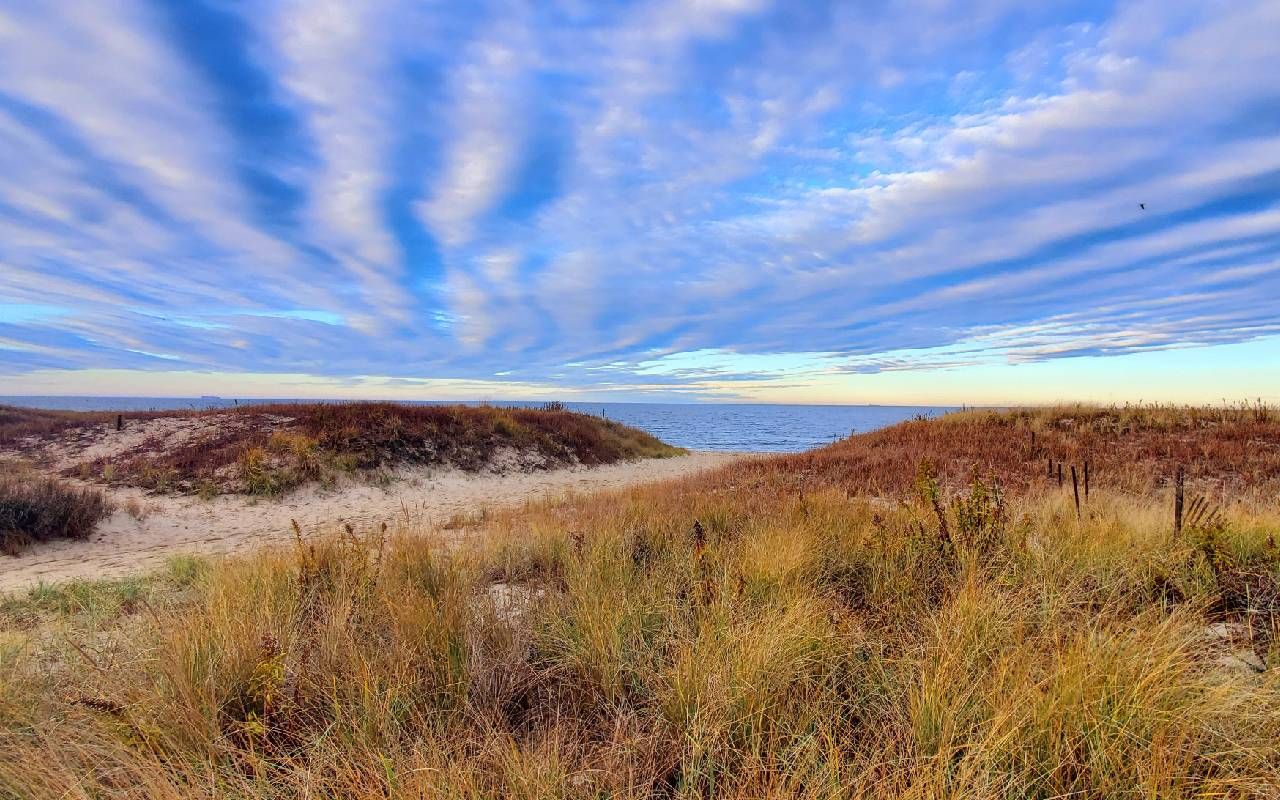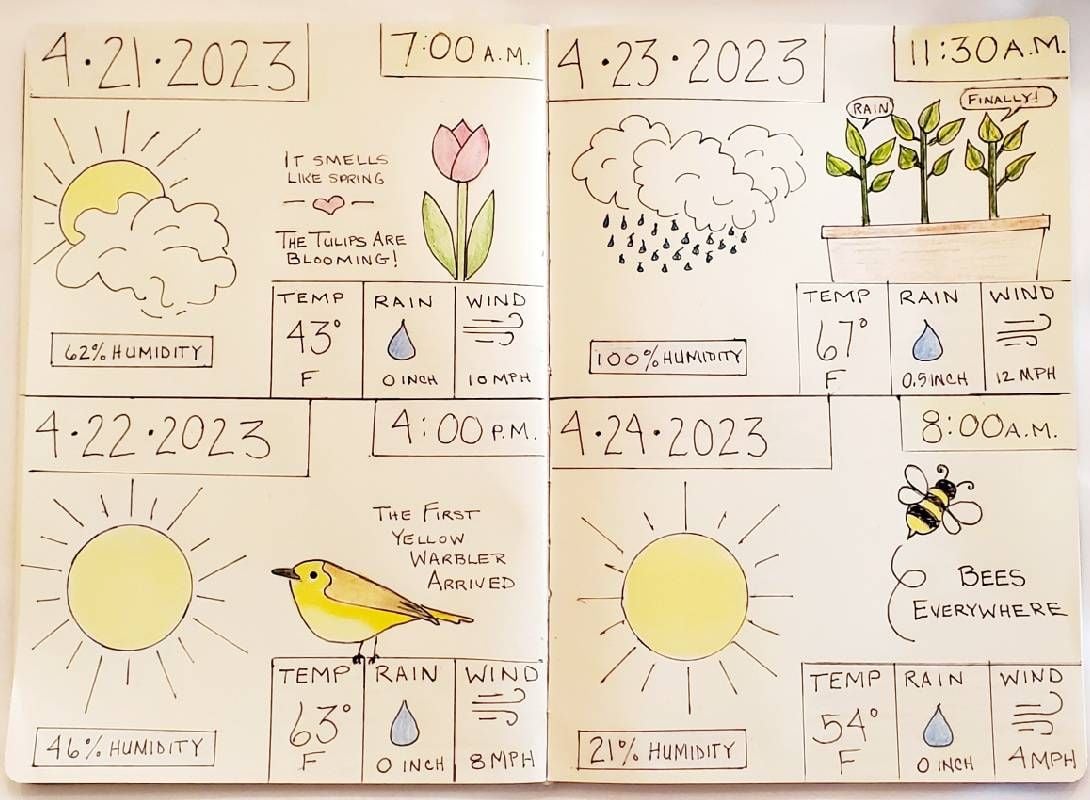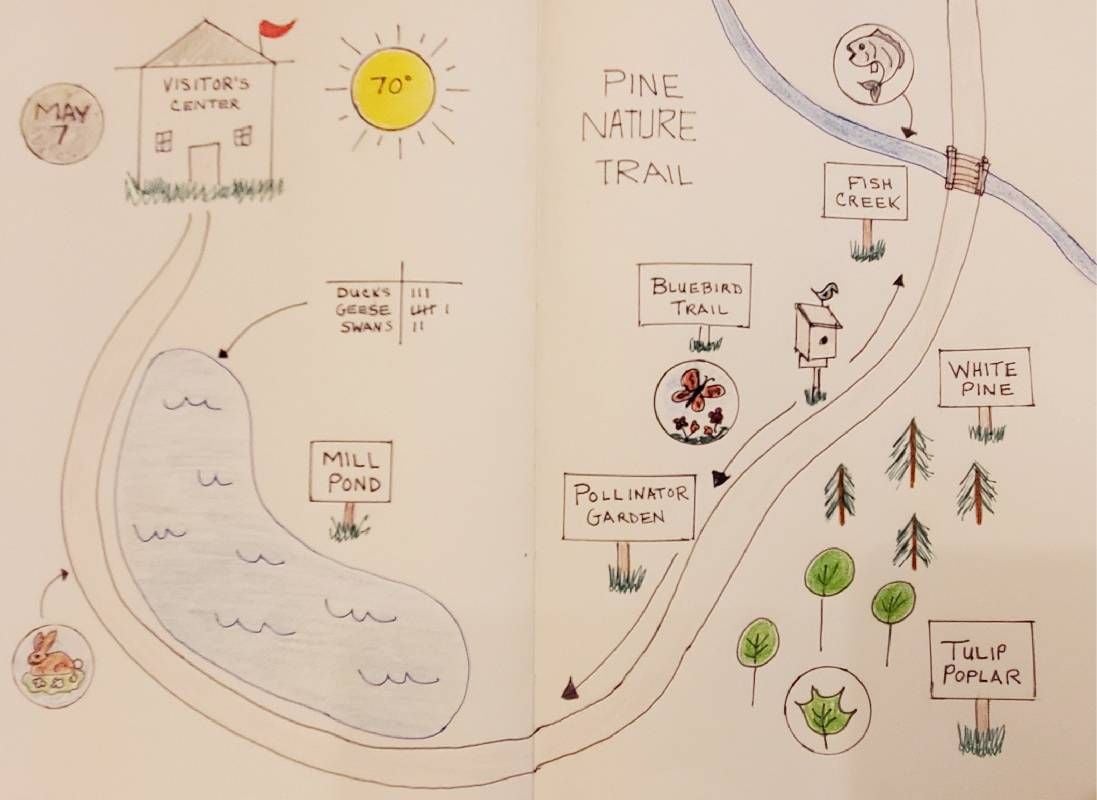Using a Nature Journal To Connect With Your Surroundings
Nature journaling is an excellent way to strengthen your observation skills, reflect on your experiences and express your creativity
Nature journaling is a centuries-old method of recording thoughts and observations about the natural world. It typically involves observing something in nature, such as a plant, animal or landscape, and drawing or writing about it in a dedicated sketchbook or journal.

Although nature journals are thought of as the tools of naturalists and scientists, they can help everyone experience the natural world in a creative and meaningful way. By observing, recording and reflecting on your surroundings, you can develop a deeper connection with nature and a better understanding of the natural world.
Nature journaling can also serve as a springboard to other satisfying activities like nature walks, wildlife watching, citizen science, poetry, painting and travel sketching.
Nature Journaling Tips
Nature journaling is an excellent way to strengthen your observation skills and learn about something new. As you observe objects in nature, ask questions about what you see. What is it? How does it work? Why is it unusual? Where is it? When will it change? Write down the questions or answers in your nature journal to enhance your memory and make a record of the observation.
Try to depict textures, tastes, sounds and scents you experienced in addition to drawing or describing what you saw.
You can also use nature journaling to reflect on your experiences and express your creativity. As you study something in nature, think about how it makes you feel and then express your feelings through drawing, painting, poetry, prose, scientific notes or even just a list of words (amazed, enchanted, delighted).
It can be tempting to focus only on what you see when making entries in your nature journal. Instead, try to depict textures, tastes, sounds and scents you experienced in addition to drawing or describing what you saw. This will help you immerse yourself in your surroundings and portray the whole multi-sensory experience in your journal entry.
The most important thing to remember when nature journaling is perfection doesn't matter. A nature journal is meant to be a record of your time in nature, not an award-winning work of art. Many of your sketches won't come out the way you planned, but that's okay.

It is better to focus on what you draw and write rather than how you draw and write. Getting your observations, thoughts, and feelings down on paper is more important than pretty pictures, flawless penmanship or perfect spelling.
Nature Journaling Materials
One of the best things about nature journaling is that there is no right or wrong way to do it. You can use whatever materials work best for you. Many people start small with just a pencil and a sketchbook. Other common nature journaling materials include pens, colored pencils, markers, watercolors, rubber stamps, glue sticks, magazine clippings and pressed flowers.
Additional supplies can also be helpful, depending on the topic of your nature journal. For example, binoculars and magnifying tools can help you get a closer look at wildlife; field guides can help you identify birds, plants and insects; and measuring tools can help you quantify observations and represent proportions and scale.
Technology and apps can also help you navigate the natural world and create journal entries. Cameras are great for capturing an image of a landscape or organism you'd like to study later. Mobile phones and other devices work well for recording sound or video that can be analyzed later. Free apps can help you learn more about what you see or experience outdoors.
- The Merlin Bird ID app from Cornell Lab of Ornithology identifies birds based on descriptions, photos or sounds.
- The Seek app created by iNaturalist uses image recognition technology to locate and identify wildlife, plants and fungi.
- The Windy app provides detailed local weather forecasts and worldwide wind reports for outdoor enthusiasts.
Nature Journal Prompts
The following journal prompts for nature walks, birdwatching, daily weather observations, backyard gardening and other everyday activities can help you get started on your nature journal.
A nature journal is meant to be a record of your time in nature, not an award-winning work of art.
- Take a nature walk. Enjoy the sights, sounds and smells as you walk down your chosen trail. Identify interesting discoveries along the way. Then, draw a map of your route and note where each discovery was located. Use drawings, text-based labels or embellishments (like magazine clippings or stickers) to represent each item, animal, place or moment.
- Sit at a window overlooking a bird feeder or find a comfortable spot outside and watch birds. Identify them by name if you can. Listen to the sounds they are making. Then, focus on just one bird. Draw the bird, using as much detail as you can. Listen to the bird's song. Is it loud, barely audible or high-pitched? Does it sound like a buzz, whistle or trill? Use thick, thin, straight, sloping and wavy lines to create a sound diagram representing the song.

- Spend 5-10 minutes each day outside or at a window observing the weather. Then, record the weather conditions in your nature journal. Note the temperature and humidity, the amount of cloud cover, the wind speed, the presence or lack of precipitation and any other observations you make. Then, make notes about the impact of changing weather patterns on you or the environment.
- Grow a plant in your window, on your patio or in a garden bed. Use text and drawings to record its progress in your nature journal. Note its size, shape, scent, texture and color. Identify any insects or other organisms that interact with the plant. Compare the plant's journey to a journey you experienced in your life.
- Select a natural object, such as a leaf, flower, rock or pinecone. Study it, and determine what color it is. Be specific. The object may seem green at first, but upon further examination, you may notice many different types of green — from light green to forest green. Then, use colored pencils, crayons, markers or watercolors to represent the colors of the object in your journal.
- Find something that interests you in nature. Write down what you know about it. Then, create a list of things you would like to know. Use your questions to guide future nature observations.

